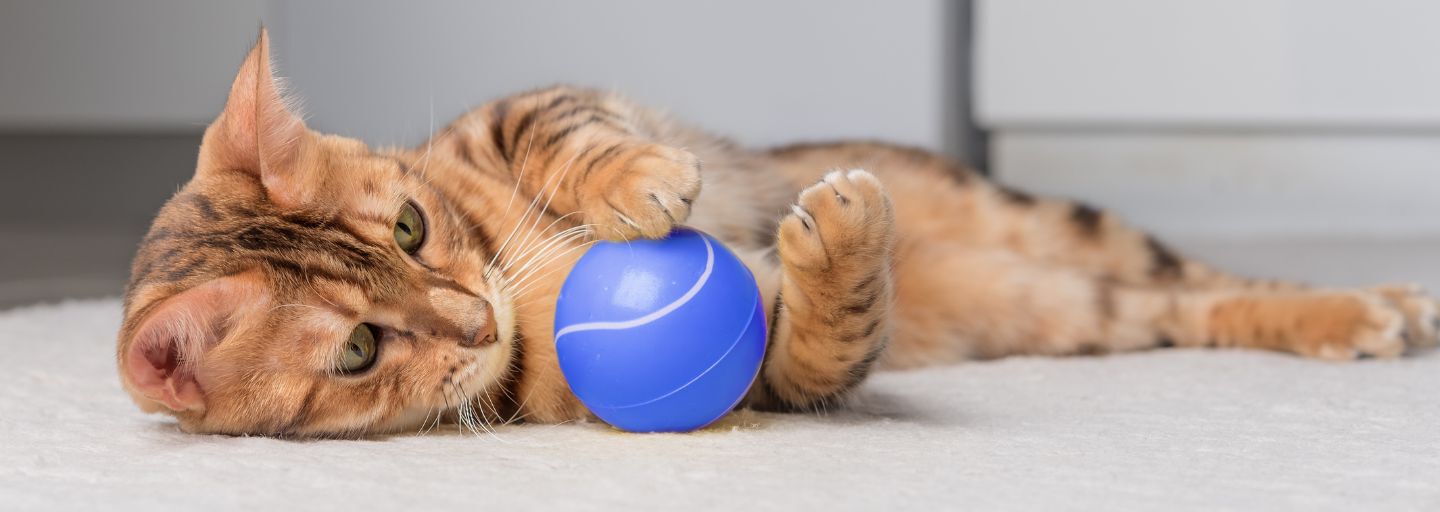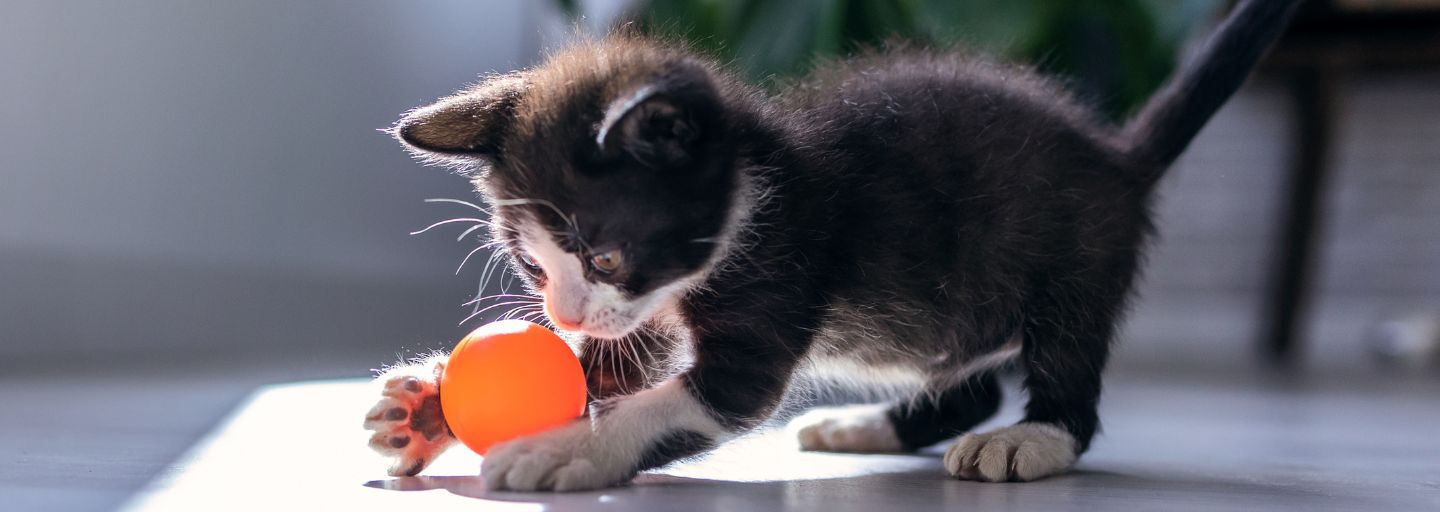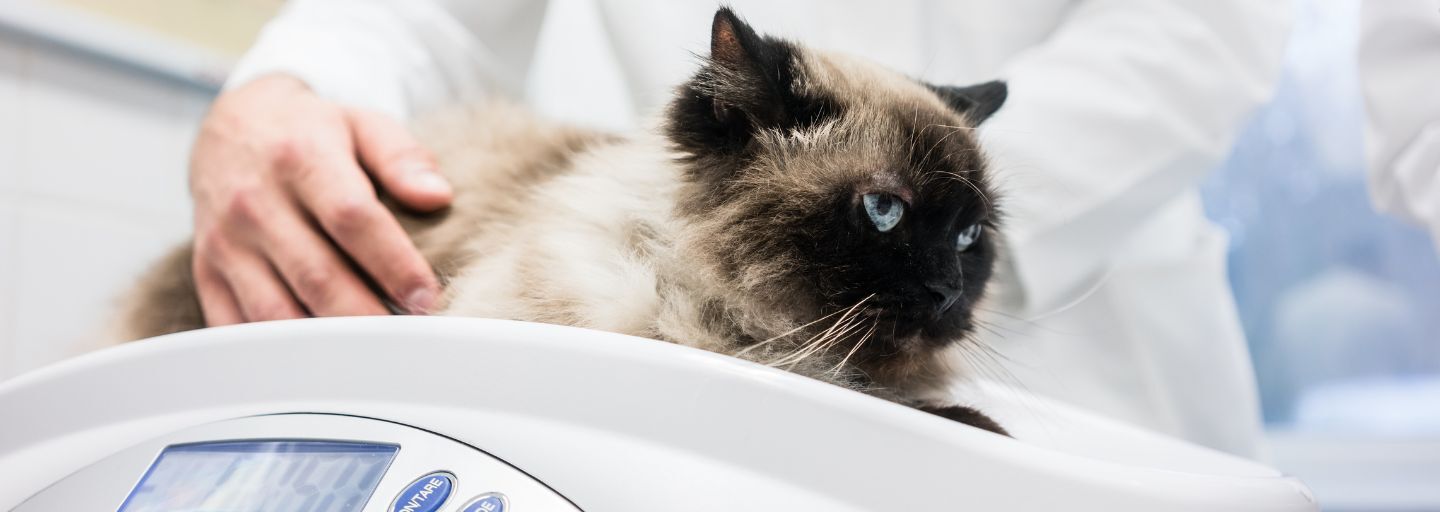It is quite common for pets to gain a little extra weight in winter as they spend more time sleeping, conserving energy, and eating treats. Of the approximately 2.3 million cats in Australia, over 41% are classified as overweight or obese. This is concerning, as carrying all this extra weight around can have serious health implications for your cat such as osteoarthritis, cardiovascular disease, diabetes mellitus, and heat stress. It can even shorten your cat’s lifespan.
Unfortunately, few owners know how to tell if their cat is overweight. A few easy hands-on and visual checks can help you be on the lookout for signs of obesity before serious health problems develop.
The Purina Rib Check
Use these steps once a month to check your cat's body condition:
- Place both thumbs on your cat’s backbone. Run your fingers along the rib cage. If you can’t easily feel the bony part of each rib, they may need to lose weight.
- Stand directly over your cat as they are standing and look down at them – you should see a slight indentation or waist behind the ribs. If your cat curves out instead of in, they may be carrying extra weight.
- Check your cat’s profile. If you don’t see a clearly defined abdomen tucked up behind your cat’s rib cage, they are most likely overweight.
These days a large percentage of the cat population live happily and healthily indoors. Don’t worry if you have an indoor cat as this won't hamper your efforts to get your cat active and trim. Here are some helpful tips to get them moving again:
- Burn calories with fun and games; remember that cats love interaction with you rather than simply relying on playing with toys on their own. It is recommended you give them toys that encourage their natural behavior (e.g., toys to chase and pounce on).
- Rotate your cat’s toys regularly. By doing that, you will encourage more interest in the toys and increase their novelty value.
- Play hide and seek with your cat's kibble. Scatter small amounts of kibble around the house to encourage your cat's hunting instincts and get them working for their food again. Find out more about feeding your indoor cat here.
- Encourage your cat to be active. This could be chasing pieces of scrunched-up paper down the hallway, using a torch to encourage swatting behavior on the floor, or using dangly chase toys to get your cat up and about.
If you also decide you would like your cat to be able to enjoy being outside, then we recommend training them to walk on a harness. To condition your cat to wear a harness, you should first practice putting the harness on for a short time while your cat has playtime inside the house. This will distract the cat from the fact they're wearing the harness and make it a good experience.
Once your cat is comfortable wearing the harness, attach the lead and walk around the house. If your cat is a little apprehensive about walking on the harness, you can encourage them with a dangly cat toy or by luring them with tasty cat treats. Once they're okay with this too, then progress to venturing outside. Make sure going outside is a good experience and that you end the adventure on a good note. If your cat is a little shy, make the walk short but sweet to build your cat's confidence. You can work up to longer amounts of time gradually. Always remember to reward good behavior with praise, pats, or cat treats.
Diet is just as important as getting your cat active. Here are some general guidelines to keep your cat’s weight in check:
- Reduce your cat’s calorie intake by feeding a nutritionally complete and balanced weight reduction formula.
- Measure their food intake.
- Omit feeding table scraps.
- Do not give them high-calorie treats.
- Do not allow them access to other food sources such as garbage bins or compost bins.
An important point to remember is to consult your veterinarian before undertaking any weight loss regime or diet change. Your vet can check your cat and provide exercise and diet advice, plus determine if there is any medical reason for your pet's weight gain.







